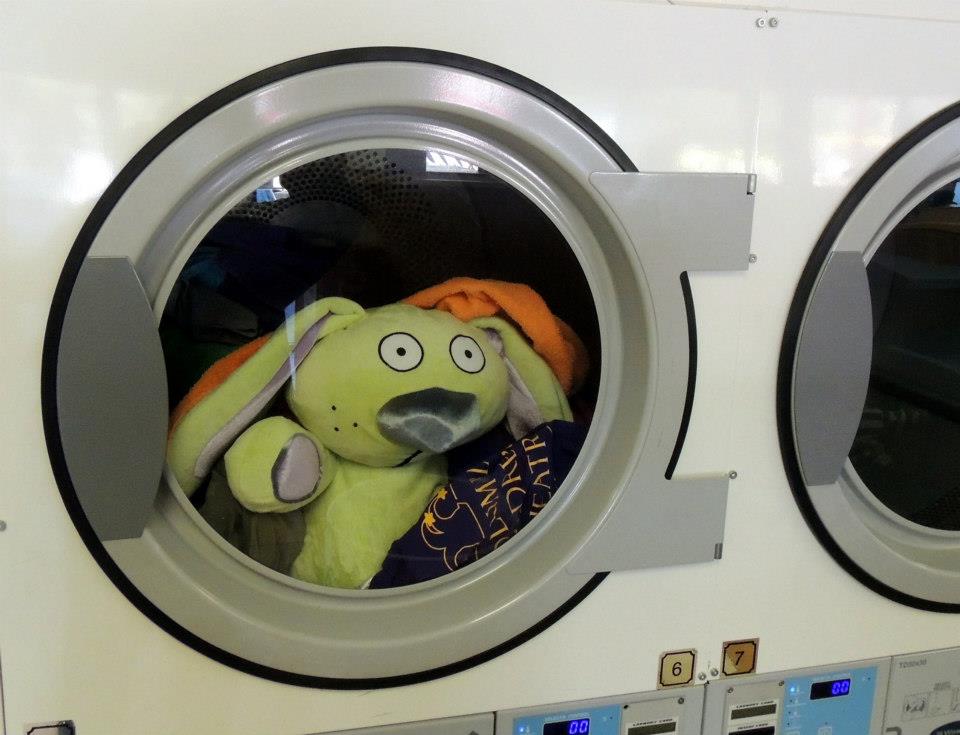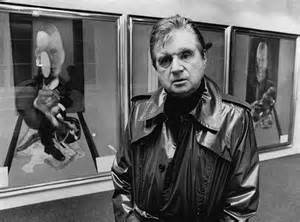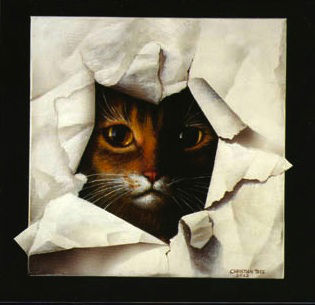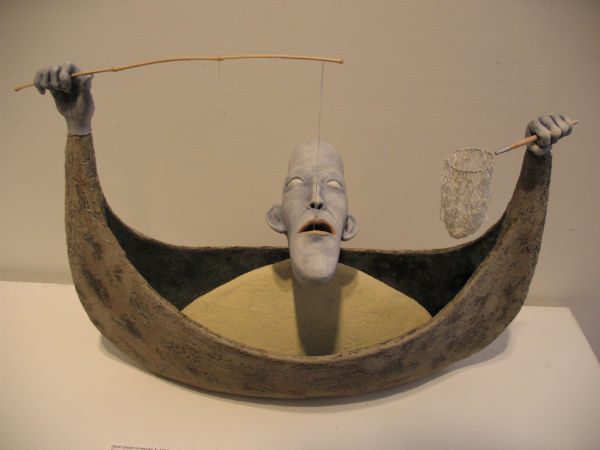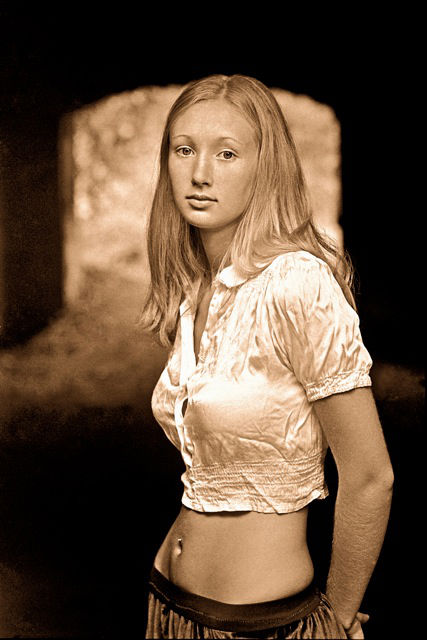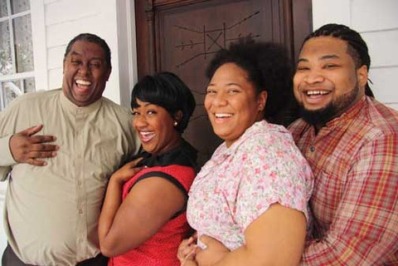"The real difficulty with Lear is that you've got to play him all, you know, shaky legs and pratfalls and the dentures coming out, 'cause he's ancient as hell, and then there's that heartrending scene when he goes right off his nut, you know, 'bliddle dee dee diddle deebibble dee dee dibble beep beep beep,' and all that, which takes it out of you, what with having the crown to keep on. So Lear is tiring, although not difficult to act, because you've only got to do despair and a bit of anger, and they're the easiest."
~ John Cleese, Monty Python's Matching Tie and Handkerchief (1973)
Theatre South Carolina tackles that "most difficult of Shakespearean tragedies," as program notes for USC's King Lear admit up front, adding Peter Brook's description of the play as a "dramatic mountain whose summit had never been reached." Inventive and daring choices in staging and interpretation create some hits as well as misses, but a talented crop of first-year MFA students in leading roles make for an entertaining and thought-provoking evening of classic theatre.
Full disclosure: Lear is not a favorite of mine, and I've never seen it live, only a filmed performance with Laurence Olivier and Diana Rigg in the '80's. Still, I spent much of the spring of senior year in high school with my buddy Greg, researching term papers; his topic was the madness of Lear, mine was the motivation of Iago, and we helped each other as we taught ourselves research and character analysis while sneaking into Thomas Cooper. Greg's conclusion, off the record and indicative of the era, was that Lear was "a crazy old, fish-eyed fool." Decades later, I think he may have had a point. Still, let me say up front that I recommend this show highly, and varying interpretations that lead to discussion are what Shakespeare is all about.
Lear tells parallel stories of fathers and children, madness and betrayal. Acknowledging his advancing years, the King intends to split his kingdom among three daughters, disowning the youngest when she declines to try to top her sisters' overly-effusive declarations of how much they love him. Meanwhile, loyal vassal Gloucester (Terry Snead) has likewise been betrayed, as his bastard son Edmund (Cory Lipman) frames legitimate son and heir Edgar (Josiah Laubenstein) as a conspirator. Guest director Cristian Hadji-Culea, Scenic Designers Nic Uluru and William Love, and costumer Sean Smith have re-imagined Iron Age Britain into a modern-dress, urban setting, which often makes strong visual and thematic statements that help clarify plot and context. As Lear, guest artist James Keegan excels at making the tricky blank verse understandable to the audience. Keegan's Lear is a vigorous man of middle years, however, and has few signs of dementia in early scenes. Eccentric, yes, foolish, yes, temperamental unquestionably, but at moments when the text suggests he may not recognize his daughter, Keegan plays these as broad jokes. This is a valid interpretation, and likely one developed with the director, but I just wasn't buying it. A key figure is the Fool, often a voice of reason and insight in Shakespeare. Kate Dzvonik gives an excellent, energetic performance, but here the character is depicted as a broadly comic, (and to me, annoying) clown-like music hall performer. Keegan's Lear really, really seems to appreciate this schtick, and when his own madness kicks into high gear, that's what he channels: not so much noble, pitiable madness, but goofy, John Belushi-like pratfalls and nonsensical prancing and singing. As above, this is a quite legitimate take on the material, but I found myself wishing for some easier explanation. In a film, one could zoom in on a bottle of anti-psychotic meds that Lear has cast away, which would explain everything, including his miraculous recovery after a day or two of rest. Here, one just has to enjoy Keegan's vitality and enthusiasm, and remember that Lear is indeed a difficult play for some to appreciate. That said, I'd love to see Keegan take this same characterization as use it as Didi or Gogo in Waiting for Godot.
Leeanna Rubin as Goneril and Melissa Peters as Regan, Lear's villainous daughters, are superb. Until we see their truly dark natures, both seem quite reasonable, their "betrayal" of their father nothing more than wanting to reduce his retinue of knights, who are brawling, drinking, eating the kingdom out of house and home, i.e. carrying on much like their liege. The equivalent of taking Meemaw's keys away, but Lear will have none of it, storming off to the barren heath (here re-imagined as alleyways and abandoned warehouses) in a royal hissy fit. "She struck me with her tongue, most serpent-like" is about all Lear can legitimately gripe about. Rubin is a commanding presence on stage, appealing and even sexy, in a tie-you-down-and-hurt-you sort of way. Her interaction with Lipman blurs the lines between plotting, domestic violence, and foreplay. Her costumes also reveal much about the character: first she wears an elegant evening dress, which quickly is traded for a sort of practical riding-dress with leggings underneath, and finally slacks, boots, and a fierce, fur-lined vest.
Peters is much tinier, and uses her size for inventive moments of physicality, leaping onto men in passion or in rage. It's no spoiler to reveal that as in most tragedies, all the bad guys die, as do most of the good guys, and a flaw in the text is that so many of them do so off stage. Here Hadji-Culea brilliantly allows us to see Goneril and Regan's last moments. Rubin goes out with quite a bang, and I could only recall James Purefoy's line from the HBO series Rome: "Now THAT was an exit."
A highlight was a special-effects-enhanced storm; rapid little blips of light were projected onto a scrim, and the result was like something straight out of graphic novels (and their movie incarnations) like Sin City or Watchmen. That combined with a visually striking depiction of an alleyway, seen from an odd angle, made me want James Costello, playing loyal retainer Kent disguised in pull-down mask, to raspily mutter, Rorschach-style, "Kent's Journal: a king went mad tonight."
So many aspects of the contemporary production design worked:
- Trey Hobbs, as the milder, gentler Albany, dresses in a sweater and glasses, perfectly summing up the character's nature. - good-and-bad brothers Laubenstein and Lipman are first seen in a natty summer suit and a leather jacket respectively, again making a perfect contrast. - plot exposition among wealthy characters takes place on a country club golf course. - a reference to trumpets in the distance becomes a car horn. - Edgar, disguised as a mad beggar, is depicted as a homeless man wrapped in trash bags, and the "cave" where he takes shelter becomes a dumpster. - awesome wind effects blow random trash across the stage in the middle of the storm. - overturned trash cans signify the decline and decay of Lear's kingdom. - Lear breaks his crown in half, and the pieces handily become tiaras for his daughters. - police sirens in the distance often signify a battle offstage, or a manhunt for a character on the run. - Kent wearing multiple layers of clothing and toting a sleeping bag as he and Lear seek refuge in an abandoned building likewise establish tone and setting. - massive brick columns anchor both sides of the stage (at least until one actor accidentally brushed up against one, revealing them to mainly be a painted design on fabric - but the illusion was perfect until then.)
A few things didn't work at all:
- three extra actors appearing as multiple visions of the Fool, to signify Lear's delusion; great idea, but distracting. - a couple of fights using golf clubs in lieu of swords. - many of the fight scenes in general. The cast needs to sit down and watch an hour of pro wrestling, because an actor really can strike someone without hurting them, but here punches, slaps, and slashes to the throat rarely connect, and seem pantomimed. - the blinding of Gloucester, which should be vastly more horrific, and painful for the character. That said, Regan's dive into the fray is terrific and believable; playing golf with one of the eyeballs, maybe not so much. - Lear breaks his crown, his scepter, a ceremonial orb ...and everything neatly splits in two, just a little too conveniently. - sound and music cues often drowned out crucial moments of exposition at the end of scenes, and an off-stage microphone that was cranked up to 11, nearly deafening the audience at one point. (Disclaimer: I saw a preview, and that has surely been fixed.) - moments of flamboyant exuberance that caused many of the students in the audience to laugh when there really wasn't anything funny going on.
At this point, one might ask "If you didn't like it, why spend so much time talking about it?" Which is the point - a solid 90% of this show (which ran about 3 hours including a generous intermission) really impressed me, a triumph given that I'm not wild about the material. Someone else could easily love everything I didn't care for, and rank King Lear among Shakespeare's best. Either way, the visual design from Uluru and Love, and the work of some remarkable young actors, made this production memorable for me.
So go see it, and you be the judge. King Lear runs through Sat. April 27th at USC's Drayton Hall.
~ August Krickel











